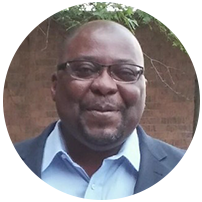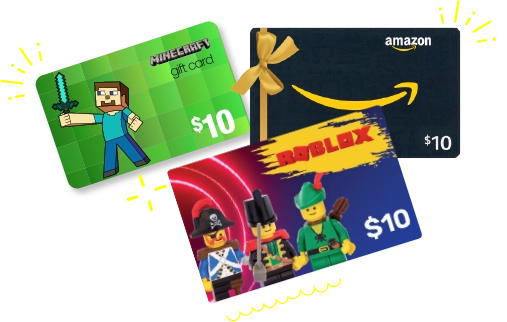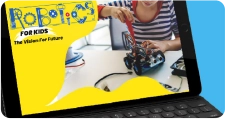Moonpreneur
Children have a natural and instinctive tendency to discover, learn and try out new things. They are very curious about the world around them and especially things that seem unfamiliar to them. This desire towards learning can be advantageous in schools as well as at homes to maximize their academic development, but only when it is carried out properly.
While preschoolers are inquisitive, they are also very active physically and mentally. It is not always easy to gather their attention if they’re not interested in something. So, what is the way to make these topics interesting to them? The answer is experiential learning.
Now, what is experiential learning? It is a learning method that focuses on experiencing, exploring, creating, and interacting with the people and world around you. This learning method applies to children as well as adults. Experiential learning doesn’t always focus on structured patterns, rather allows children to learn naturally and at their own pace.
Experiential learning involves outdoor play, creative & imaginative play, art forms such as dance & music, and community activities as well as exploring the environment and nature.
Moonpreneur has reached out to the experts in the education industry and here is what they have to say-

1. Shawn Bean
Shawn Bean has been teaching at high school since 1999 and is also an entrepreneur with 2 companies (MidwestTeachersInstitute.org and PdPersonalized.org) and a blog (teachersidehustleblog.com).
He attended Bradley University for undergrad, then Walden University for his master’s degree. In his current role as an educator, he often speaks to students about what it takes to get into their dream college. He explains-
“Experiential learning is one of the highest forms of learning, we can use in our classrooms. Although there are times when we simply can’t use this form of learning due to time constraints. However, we should look to include it whenever possible.”
A great example of this was when I taught the students a version of World History called the Big History Project. One of the topics that were covered was planet formation, and to illustrate this we went outside and the students ran in a big circle until they “gravitated” towards each other and linked up.
Eventually, they’d all be linked, and it really drove home the point to the students what accretion was. They talked about that day for years, which certainly wouldn’t have been the case if I’d just mentioned it or shown them a video.
I also used to have students simulate political deals with a simulation that put them in countries that were on the brink of fighting. It was a great lesson that, once set up, ran itself. The big reveal at the end was that their countries represented European powers prior to WWI, and they usually had a similar outcome. But not always, which led to great discussions about alternative outcomes.
I personally love the way students take control of their learning and it becomes less of looking to me for all the answers and allows the students to start making their own connections to the topic. They are forced to communicate, solve problems, and often provide their own solutions.
I try to incorporate experiential education and experiential learning activities at least once a unit in my courses, and usually, those are the days the students love the most. The next day students usually ask when we’re doing that again, which rarely happens on a regular school day.”

2. Dr. Rachel Schechter
With a Ph.D. in Child Development from Tufts University and M.Ed. in Arts Education from Harvard University, Rachel brings a unique perspective about how to support equity, diversity, inclusion while accelerating learning.
Rachel said “Learning by doing” is one of the most natural human learning processes that begins from the moment we are born. As educators and administrators focus on accelerating learning this year, we can maximize experiential learning by integrating two complementary Learning Sciences principles: authenticity and deliberate practice.
Experiential learning that is authentic uses real-world, culturally relevant problems for students to reflect on, analyze, and make decisions about. When students see their lives in the learning experience, it strengthens their sense of belonging and their motivation for learning.
Accelerate skill development during experiential learning by deliberately focusing on the academic skill outcomes you are aiming for. This promotes the possibility of learning specific skills from natural consequences, mistakes, and successes.
Put students in groups to “learn by doing” together, and you have a collaborative, SEL-infused, skill-packed, and engaging learning boost.

3. Ashutosh Jhureley
Ashutosh Jhureley is an experienced and qualified professional with deep-rooted skills in software application design and development. He has around 15 years of experience in the IT Industry and is currently working as Solution Architect. He is currently the Co-Founder/Head of Supply Chain-eCommerce at Moonpreneur.
Ashutosh highlights a very unexplored advantage of experiential learning, which is memory retention.
“Children, when provided with the opportunity to act on a content or when they are fully interested, are able to gain deeper knowledge.” This phenomenon leads to synapses (nerves in the brain) creating stronger connections when children associate motor functions to new information, which leads to higher memory retention.
Experiential learning activities require maximum attention and effort during participation. Therefore, the process of learning becomes more of an exercise of hands-on learning. Learning robotics is one such example where kids have to go through an extensive process of hands-on learning. Robotics is a branch of STEM learning that constitutes constructing, operating, designing, developing, and applying codes that can make a robot work. In simpler words, robotics is a way of acquiring control over machines.
Another important element of experiential education is the sense of accomplishment and emotional growth, it provides to the children. It allows them to take up new things, and with the help of adults, they are able to take ownership and move past the initial struggles.”

4. Mike Palmquist
Mike states “Can you imagine a successful 21st-century curriculum focused on critical thinking, creativity, communication, and collaboration, where you didn’t practice those skills? Does it even make sense? Yet, so much of our students’ school days are spent in “learning about” and not “doing.” Most students are not measured on daily activity, but test scores.
Consider the areas of multiple intelligence (verbal-linguistic, logical-mathematical, musical, interpersonal, physical-kinesthetic, visual-spatial…), how would you design a learning program around any talent without putting in ample time for practice and feedback?
We should study how talented instructors encourage exploration and practice in the arts, technology, music, sports, speech & debate, and other domains that rely on “experiential learning”.
Let’s track engagement (time in practice, time doing). Let’s meet students where they are and provide opportunities for enjoyable challenges and meaningful practice. The successful practice has always been cultivated by good coaching feedback. There’s no final grade. There’s only getting better.
In the 21st century, we work in agile teams focused on data-driven, continuous improvement. Shouldn’t we be organizing our middle and high schools exactly like this to prepare them for what they will encounter later? Wouldn’t this require experiential education?”

5. David Franklin
David Franklin, Ed.D. is a dynamic leader focused on driving innovation and enhancing the field of education through technology, data, and strategy. He has rich experience in the educational field and applies those learnings to advance today’s technology.
David says, “the COVID-19 pandemic has forever changed education. As students transitioned into distance learning, they were given the opportunity to experience new forms of instruction and learning. The familiarity with the teacher in the classroom guiding students through the curriculum is certainly lost.
In its place, it was a more experiential teaching and learning model. In this model, students were given more choices in pacing, problem-solving, and demonstration of mastery. Students also interacted with their peers in new and exciting ways as well as learned how to navigate dynamic instructional platforms, communication tools, and learning management systems.
As students return back to the classroom, we must continue to support this new model of learning. Most of us welcome out-of-the-box thinking. However, the past year and a half have taught us that we must ditch the box altogether.

6. Dusan Milic
Dusan Milic, CEO at All About Robots, an EdTech startup, has years of experience as President of the Assembly at Electronic & Robotic Association and euRobotics coordinator for Serbia. Dusan Milic has his own EdTech startup.
He is currently the CEO of a two-year-old company, All About Robots, which creates and manufactures educational sets for easy learning robotics and electronics.
Dusan says, as soon as kids see lots and lots of boring black letters and words on white paper they don’t have the desire to read it, and I wouldn’t judge them. That really is not fun and it is not a learning option for the 21st century.
That’s why experiential learning is very important. Kids need to see, hear, try and touch things that they are learning about. It’s good that kids know what they are learning in theory but the experimental part is the key.
That’s when all those words they read get retained and they really understand what it is about. And when it’s time to use their knowledge, they have pictures in their head because they saw it in real life. That’s why learning through experimenting is easy, fun, and the most effective way of learning.

7. Victoria Lynn Rodrigue
Victoria Lynn Rodrigue has over 15 years of experience in education, including K-12 and higher education. She started teaching in Vienna, Austria while studying music on a Fulbright fellowship. She earned a Master’s Degree in Music History from the University of Michigan-Ann Arbor before going on to build her education career in the San Francisco Bay Area.
For the last six years, she has served as an accreditation team member and visiting committee chair with the Western Association of Schools and Colleges. She is currently a partner at BTS Spark, a not-for-profit education practice that works to transform schools and school leaders through mindset-based coaching.
Victoria says, while the use of virtual learning during the 2020-21 academic year highlighted issues around student engagement and academic achievement, these challenges predate the pandemic.
Scores on national and international exams show American students falling behind or remaining stagnant in reading and math, despite a decades-long effort to raise standards.
Many students are unprepared for higher education, as a 2017 Hetchinger Report investigation of 44 states found. In the 2014-15 academic year, 569,751 college students have enrolled in remedial coursework and at least 209 schools placed more than half of incoming students in at least one remedial course.
The results are no better for students who complete college. A 2018 Job Outlook Survey conducted by the National Association of Colleges and Employers found that the majority of employers rated graduates as below proficient in professionalism, oral/written communications, critical/thinking and problem solving, leadership, career management, and Global/Intercultural fluency.
These findings point to a disconnect between education and the real-world application of knowledge. But what can be done to ensure that students are prepared for college and the workforce?
Since Experiential Learning focuses on the learning process of the individual, it works with different learning styles and can be applied to a wide range of learning activities. The key elements of Experiential Learning, action, experimentation, and reflection, are not only important for adult learners but can also help K-12 students to gain a deeper understanding of the topic and develop real-world skills, such as critical thinking, problem-solving, communication, and teamwork.
Experiential Learning fully engages students in the learning process and helps them understand how the content is relevant to their lives and future opportunities.

8. Ayo Olufade
Ayo Olufade, an educational Consultant in STEM Education is a Biochemist, Biotechnologist, Science Teacher in K-12 Education, Adjunct Professor, and Project Management Professional. Ayo has extensive experience in coordinating all facets of curriculum and program evaluation as well as the ability to plan, implement, monitor, and assess a school-wide STEM program.
Ayo explains, “engaging students and keeping them motivated in classroom learning is a persistent challenge in K-12 educational settings. One way to mitigate this challenge is through experiential engagement. Experiential learning is different from rote or didactic learning because learning is an active process in which the students apply and connect prior knowledge about a phenomenon to a present real-life problem.
Kolb (1984) defined experiential learning as “a process, in which students create knowledge through experiential transformation.” According to Kolb, learning is most effective when learning processes are:
- Concrete experience (for example, students are engaged in a hands-on activity).
- Reflective observation (thinking, recording, and discussing the experience).
- Abstract conceptualization (thinking at an abstract level about why the observed processes work as they do).
- Students have actively engaged in experimenting (for example, testing hypotheses).
Not only is experiential learning fun and interactive, but it also enhances life skills such as teamwork, communication, and creativity. It also provides:
- A safe environment where students can engage through trial and error in science and engineering practices like identifying problems.
- Modeling (like using mathematics).
- They are constructing arguments from evidence.
Recent reforms in K-12 STEM education (like the Next Generation Science Standards [NGSS and Common Core State Standards-Mathematics [CCSS-M]) provide teachers with a framework to help their students effectively and intentionally stay engaged in their experiential learning by making curriculum and instruction in K-12 science and engineering more purposeful, engaging, and authentic. For example, the NGSS science and engineering practice standards engage students in the practices associated with science and engineering practices like:
- Asking questions (for science) and defining problems (for engineering).
- Developing and using models.
- Planning and carrying out investigations.
- Analyzing and interpreting data.
- Using mathematics and computational thinking.
- Constructing explanations (for science) and designing solutions (for engineering).
- Engaging in argument from evidence.
- Obtaining, evaluating, and communicating information.
Likewise, the CCSS-Math contains standards that engage students in experiential learning through research and solving problems. Students sense problems and persevere in solving those. This requires mathematical modeling by:
- Reasoning abstractly and quantitatively.
- Construct viable arguments and criticize the reasoning of others.
- Using appropriate tools strategically.
- Attending precision.
- Looking for and making use of structure.
- Looking for and expressing regularity in repeated reasoning.

9. Yolanda Frazier
Yolanda Frazier is an exemplary model for the Portland and Southwest Washington business and community arenas. She works towards bringing about equality and better business and educational operations. Her talent, skills, and expertise help people get connected, guided, and meet goals.
True Experiential Learning can significantly improve learning for children and everyone because it involves practice learning with no barriers and provides space for inclusion. Research has shown that from the time our brain continues to develop, every experience, every exposure plays a part in our human development.
Yolanda expresses, “I like to think of continual, practice learning originating from those physically closest to us, pre-Internet days, like teachings from our mothers, fathers, families, friends, churches, and other physical spaces like our libraries, communities, and educational institutions.
Moreover, Experiential Learning is embracing our differences, acknowledging our perspectives, and creating equal opportunities to compose something new for everyone’s well-being. This happens when we are free to learn and reflect upon what we’ve learned to advance humanity and sustain kinship.
In a Nutshell
It is important that we understand that creativity and communication are tools of a diversified future. Children who are exposed to experiential learning at an early age are more likely to do greater things in life.
In today’s day and age, the traditional teaching methodologies and the bookish knowledge do not hold much value. You acquire true knowledge from your personal experiences.
At Moonpreneur, our educators follow a unique experiential learning approach to teach more effectively. The focus is on assisting students to reach their maximum learning potential. Our unique system provides children with an opportunity to try out new projects, engage in experiential learning activities, and acquire product-development experiences.
This helps them in setting up their own goals and working at their own pace while gaining knowledge about multiple domains.










